Gentlemen’s Guide: Bangkok’s 5 Best Barber Shops
These top 5 barber shops in Bangkok are where gentlemen can elevate ...
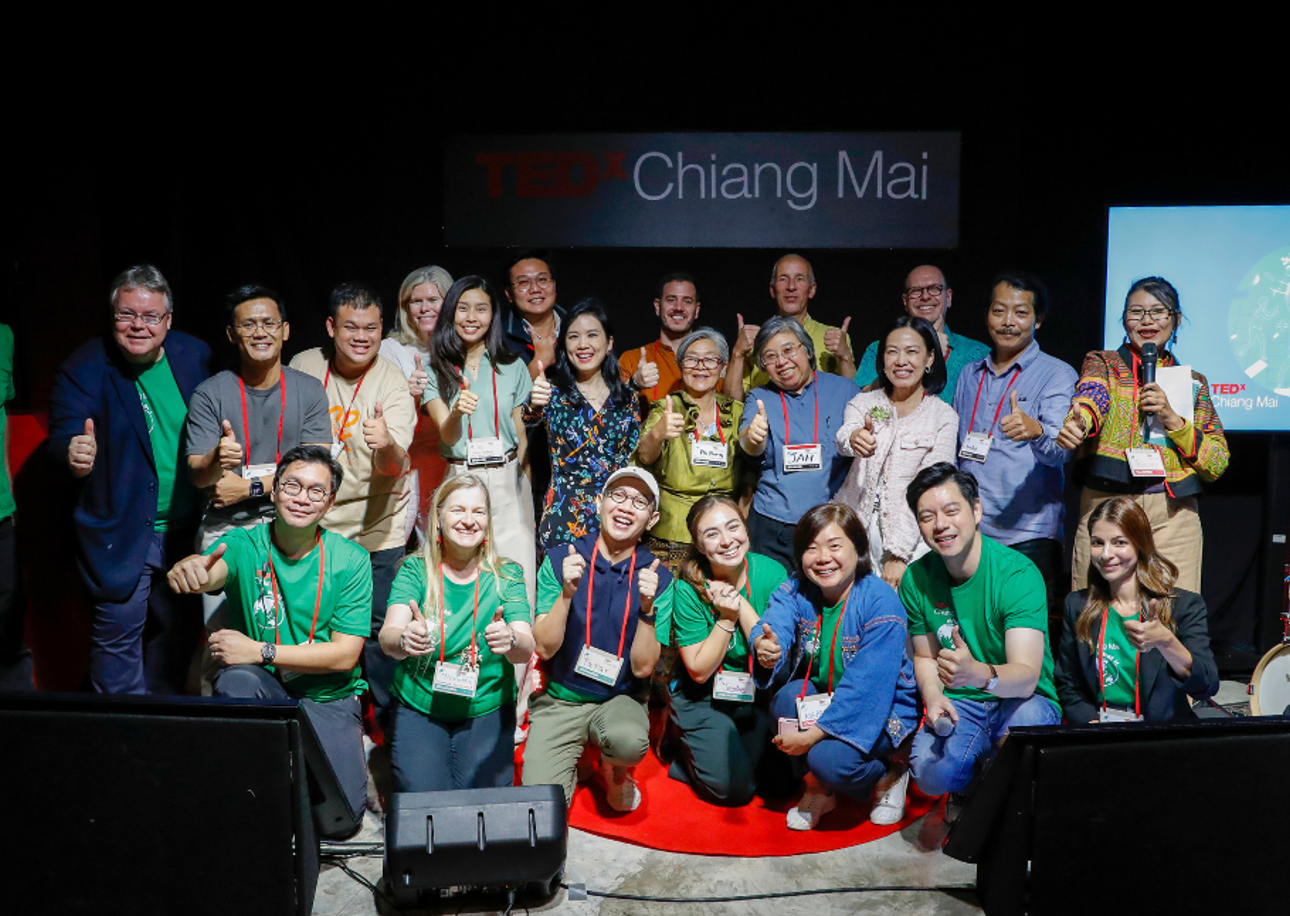
This month, through the inside story of two TED Talks, he reflects on mentorship, fate and how to go behind the personas we all create. It’s also a eulogy for a remarkable man.
Life goes in cycles. They don’t repeat, but echo and intensify with each round. I got multiple collisions of fate last month, when I gave a talk at TEDx Chiang Mai.
The event happened to fall on the 30th anniversary of the date when I first arrived in Chiang Mai. I’d gone there to learn traditional Lanna massage. By pure coincidence, another of the speakers was Chongkol Setthakorn, the very man who’d taught me massage back in 1994!
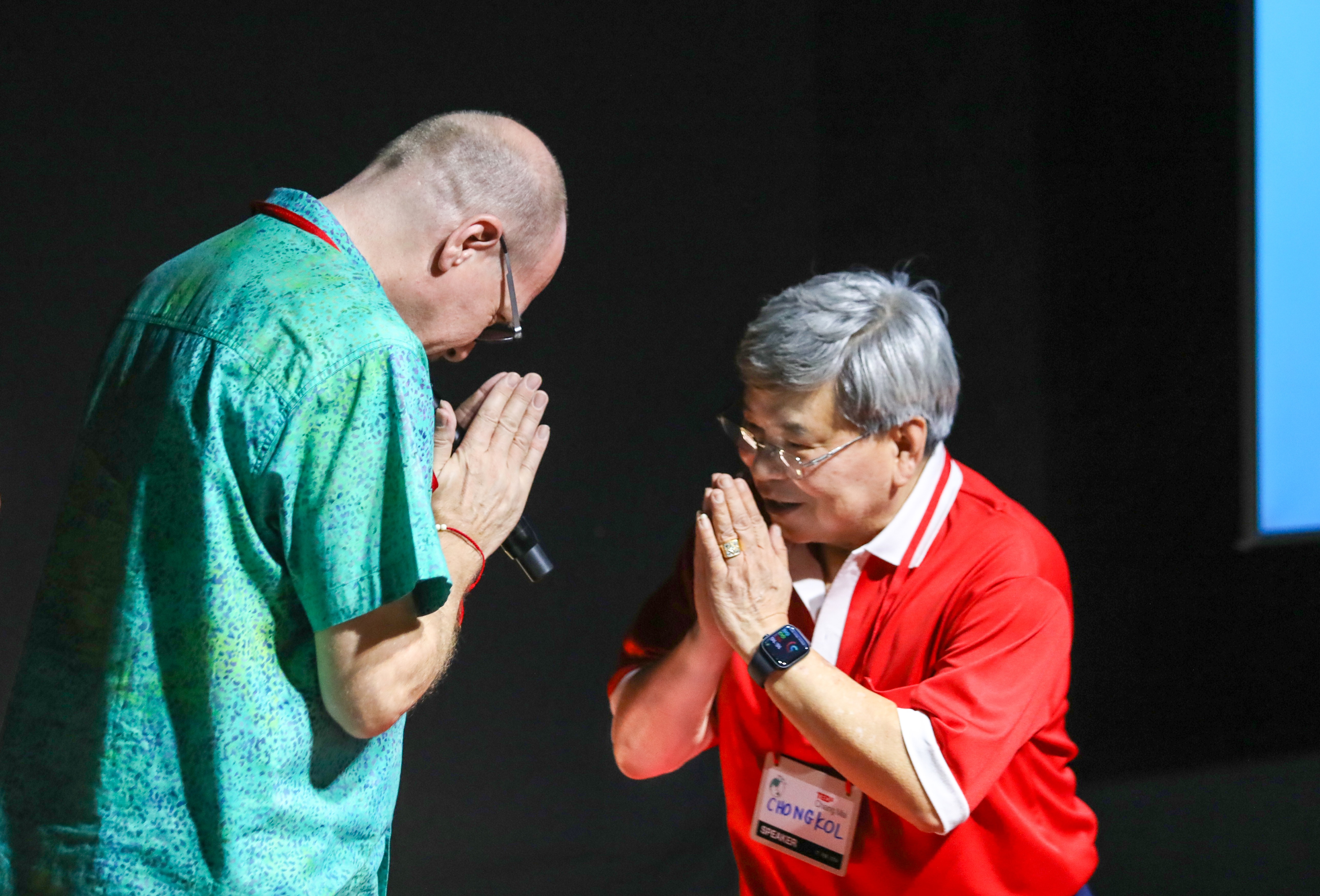
Greeting my mentor, Lanna massage master Chongkol Setthakorn. Photo: Courtesy of TEDx Chiang Mai.
I got to thank him on stage for something that changed my life. I never did become a masseur, but I did get a deep dive into Thai popular culture, which became the basis of my career. And I experienced it through the senses – through touch, balance, herbal oils and the meridian lines that map the body – and through mentorship by a master. That last bit is the key.
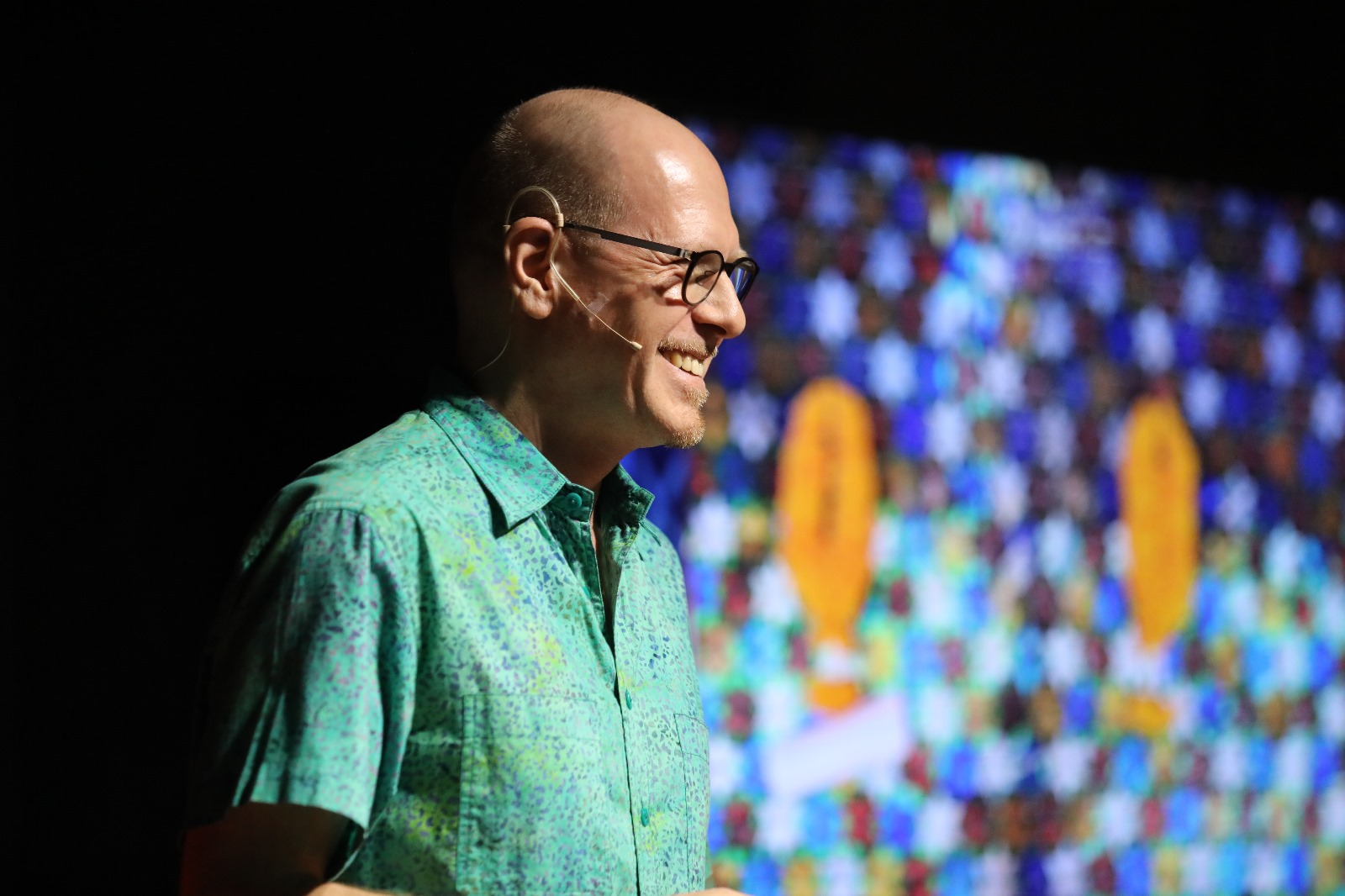
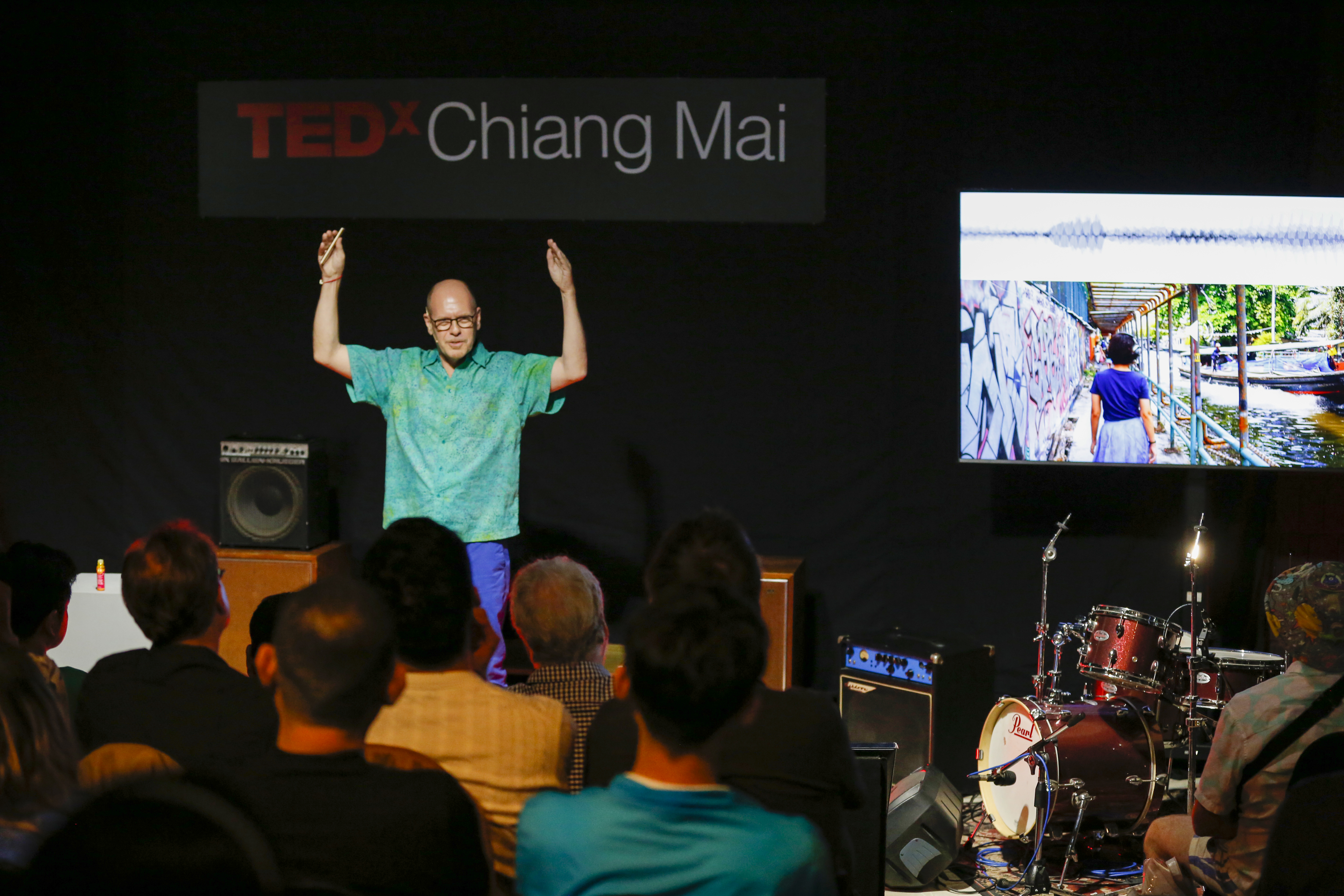
You may have been among the billion viewers of videos from TED, which stands for Technology, Environment, Design. A US-Canadian non-profit founded in 1984, the organisation holds flagship talks aimed at a global audience, plus over 1,500 locally-organised TEDx licensees, who must follow the franchise’s recipe, livery and principles. Among Thailand’s several TEDx groups, mostly in universities, TEDx Chiang Mai remains the most international.
TED Talks do have a tell-tale emotional tone, often conveying a can-do approach to a shared future. They mustn’t be a promotion. I couldn’t say “buy my books” or flash the covers. Instead, speakers must re-examine their work to identify some breakthrough, insight or tool hidden within. That can entail a profound challenge to our original ideas.
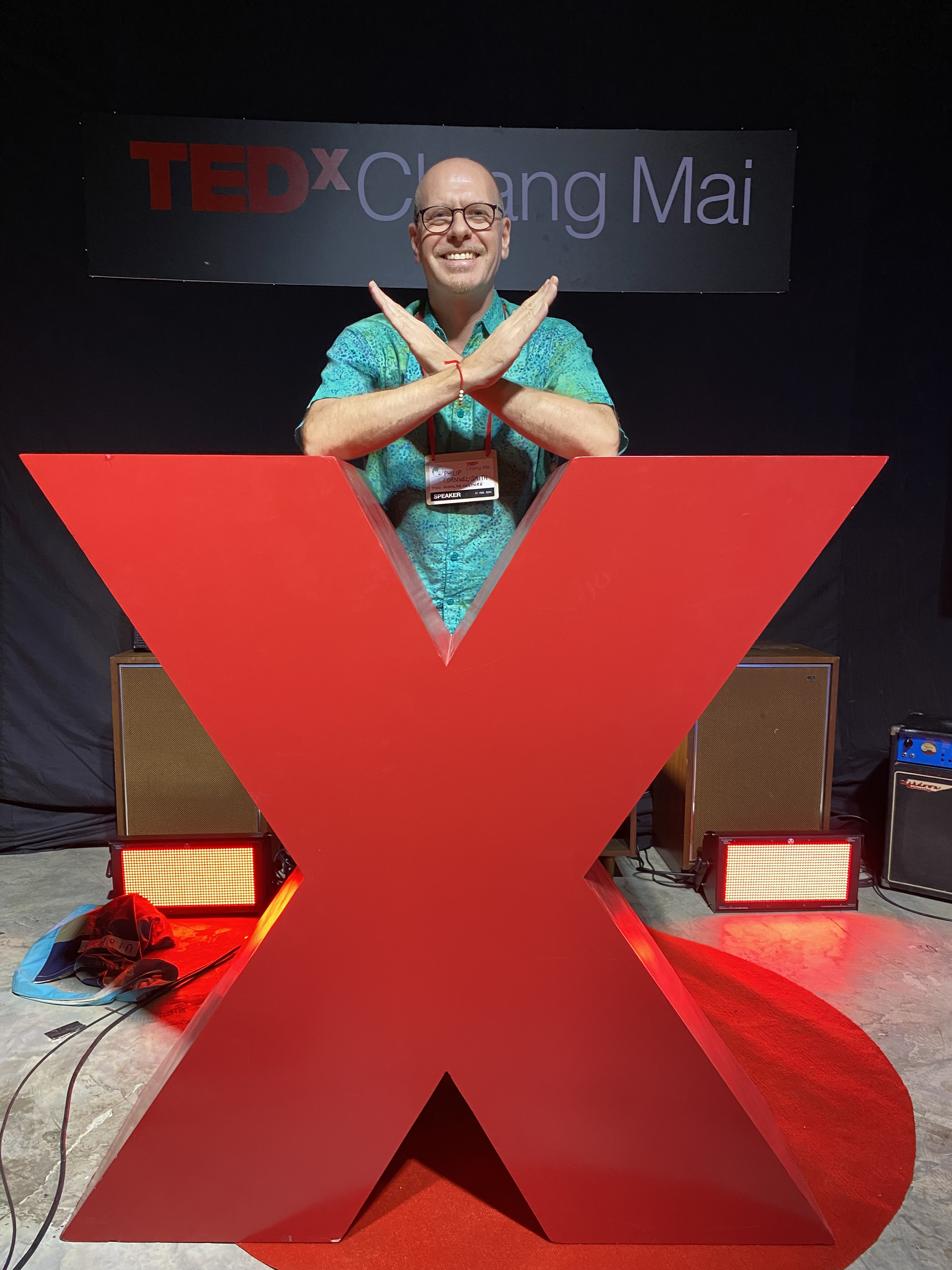
The TEDx Chiang Mai team of Thai and foreign curators – all volunteer but very professional – then help us find ways to re-structure it as a discovery with a takeaway that the audience can apply in their own lives. Distilling all that into a lucid script takes months of rethinking, reworking and refinement. I recorded myself speaking the drafts more than 25 times.
Some criticise TED for fitting each topic to their formula, turning science and ideas into edutainment. There’s a set length (15 minutes; we had to aim at 12-14 minutes), a fixed speaking position, no lectern, no notes, minimal slides. It’s hard to avoid clichés about our “journey,” our “challenges,” and the “now just imagine…” scenarios found in many TED Talks. It’s nerve-wracking to memorise the script and focus on engaging the audience. But in subsequent public speaking, I found greater ease and assurance. So it’s not really a formula, rather a new skill-set.
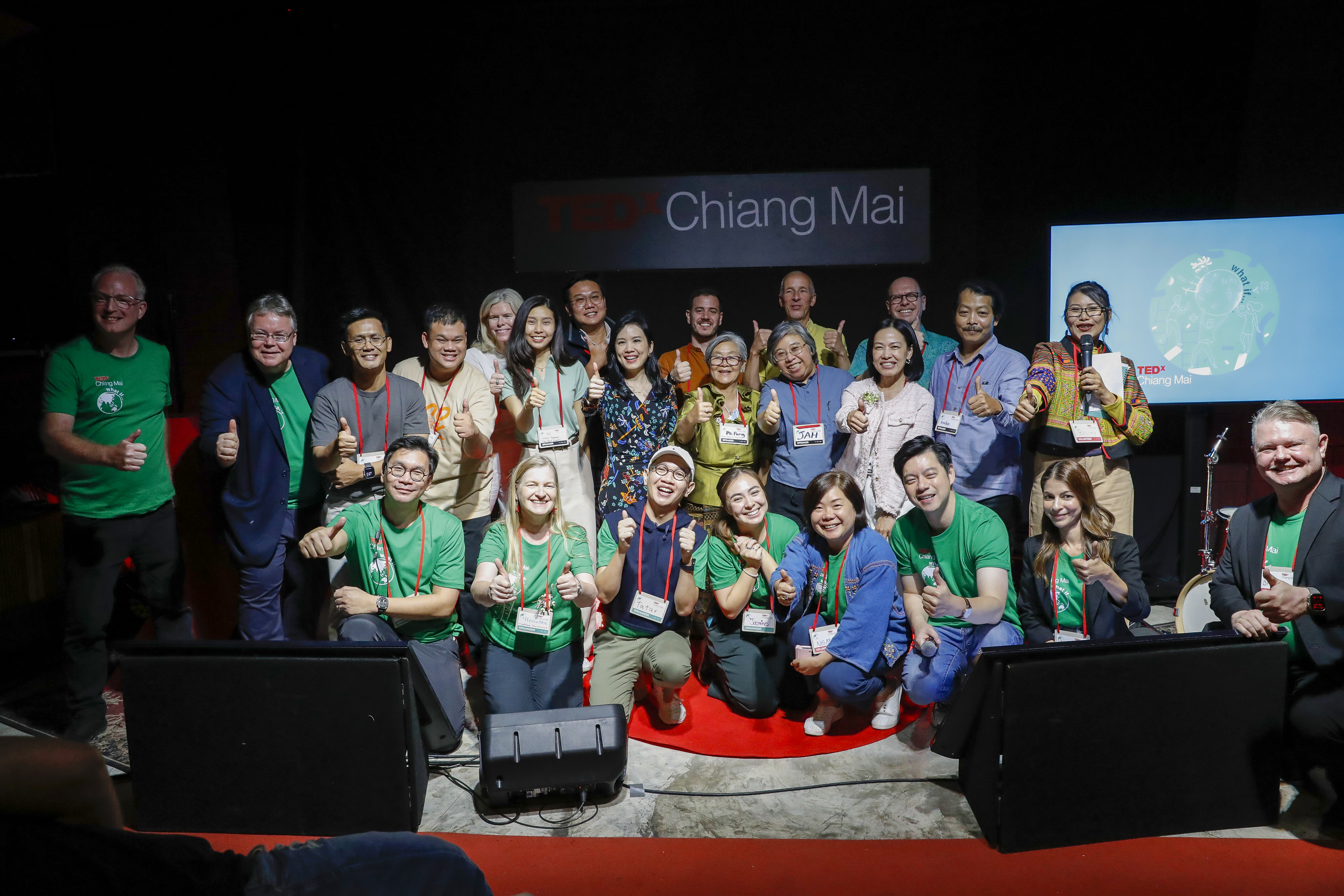
The TEDx Chiang Mai team and speakers. Photo: Courtesy of TEDx Chiang Mai.
I did, however, use props: a carved massage tool, a bottle of herbal oil, vivid pictures and sound effects. Those multi-sensory elements were vital, because my talk was about ‘How to Build a Sensory Profile of Place.’ My book Very Bangkok re-examines the city from 20 senses that reveal aspects of its character that people might otherwise miss or misinterpret. Essentially, I turned Very Bangkok into a tool that can be used for any other city.
I even had a brief go at a sensory profile of Chiang Mai. It has a gentler pace, a more savoury flavour profile and prominent traditional aesthetics, with folksier textures from stucco and brick to saa paper and teak thatch. Unlike in Bangkok’s meandering plain, sense of direction is clarified by mountain range, square moat and north-south river.
A sensory profile could have many applications, from hospitality to services to city planning. This year’s Bangkok Design Week had several elements focusing on the sensory character of localities, like the soundscapes of Bangkok Yai, the colours that typify Charoenkrung, scents inspired by localities, and sensory help for the blind.
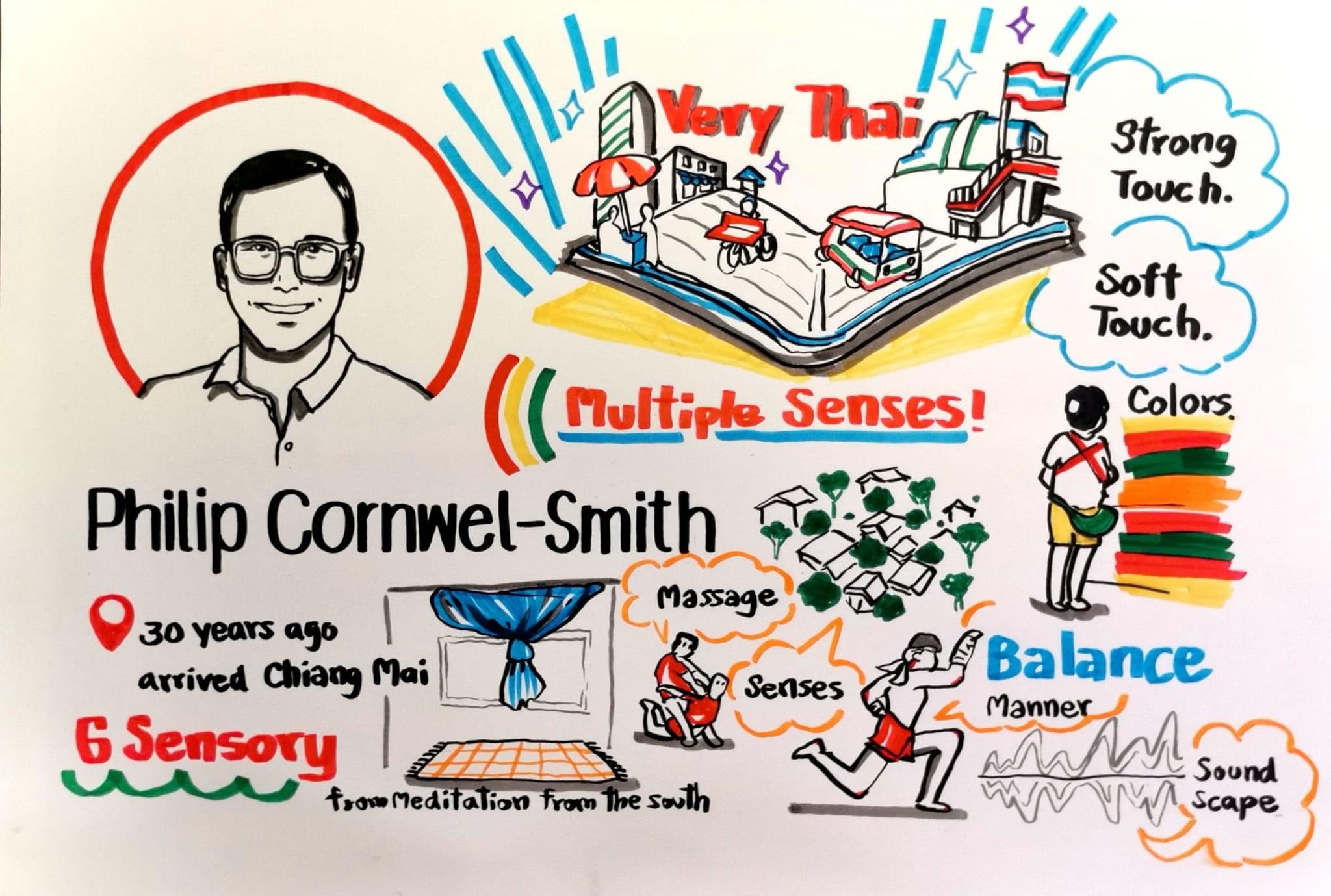
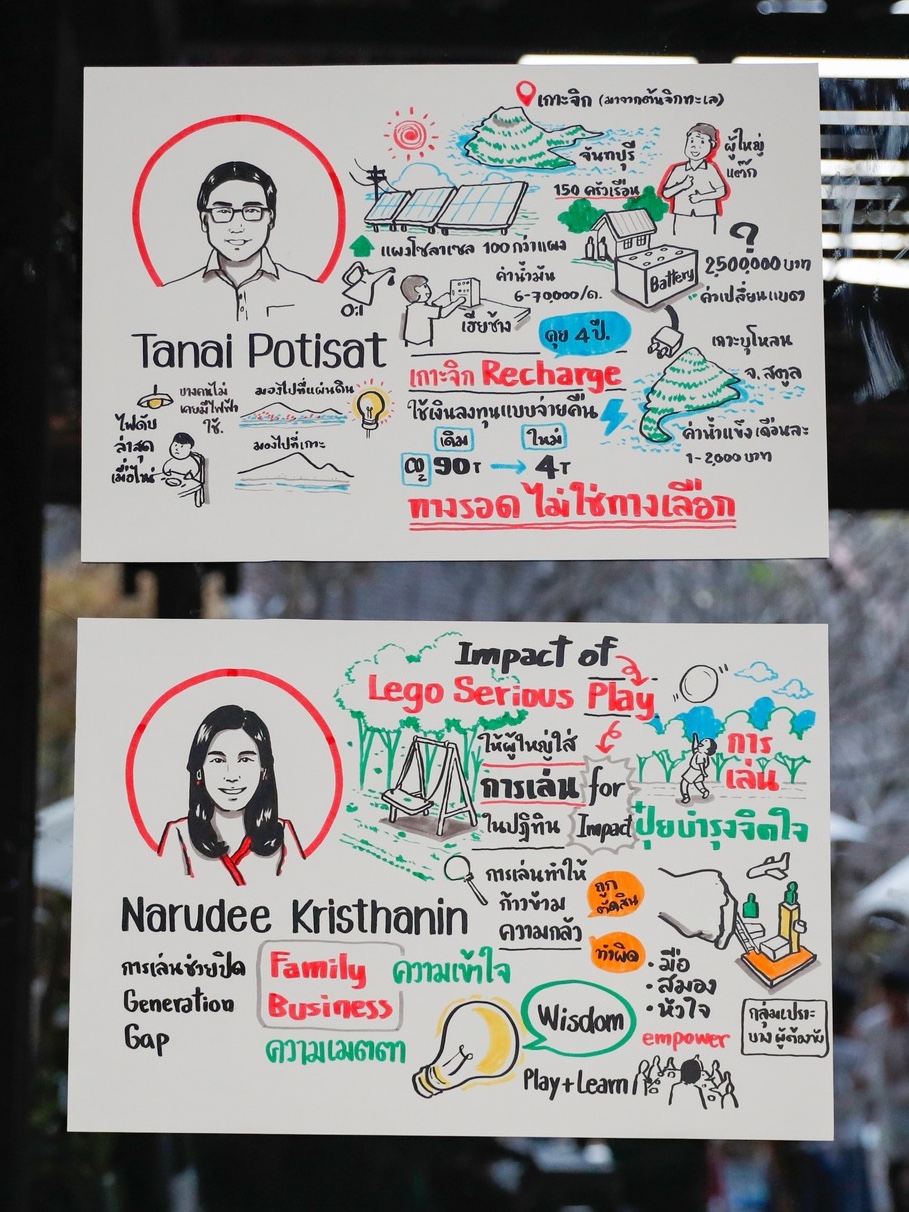
I also went through my script with the consultant editor of Very Bangkok, Marc Pachter, who had himself given one of the showpiece TED Talks. A leading figure at the Smithsonian Institution in Washington DC for three decades, he ran both the National Museum of American History and the National Portrait Gallery of America. Marc faced the problem that ever fewer great Americans were sitting for painted or even photographic portraits. His solution was the Living Self-Portrait Series of oral history recorded live in a theatre. It became a treasured phenomenon.
Marc’s TED Talk was about the technique of “empathic interviews” he developed for Living Self-Portraits. The point was to get behind the fixed stories of our public self that we all develop, repeat and polish over the years. Such shells are even more impenetrable for famous people, who have to keep retelling their bio constantly. To draw out the authentic motives and decisions in their lives, the probing got pointed and personal. He asked the choreographer Agnes de Mille, then stricken in a wheelchair, “was it a problem in your life that you were not beautiful?” The audience gasped, but it was a question she’d wanted to be asked her whole life. It explained the origin of her career.
Marc’s takeaway for the public was that this can be a technique for talking to your elders, because they “know how the story turned out.” Most families have favourite anecdotes, “when I was young” homilies, and topics that remain unspoken, especially for those of “the silent generation.” Most of us regret not having asked more about our elders’ lives; one reason is that we all shield behind what Marc called the “infomercials of our lives.”
TED Talk – Marc Pachter: The Art of the Interview
Video & image courtesy TED
When I saw Marc’s TED Talk video, I too gasped. I realised that he’d been using this technique on me. He had run a writers’ group in DC for 23 years. I had become one of his stable 15 years ago when we were introduced by a mutual friend. Unusually for an editor, he hardly marked anything on the printouts, aside from some ticks, the occasional “yes” and the word “chewy,” which was his kind way of saying “rewrite.”
What Marc edited was me – or rather my ideas, arguments and structures. He never put his words into my text, but his questions got me to find within myself those insights and connections that get hidden behind the initial draft. Just as with our public selves, writers must get past early assumptions of what the story is really about. At the launch of Very Bangkok in BangkokEdge ideas festival, it was my turn to be interviewed by Marc on stage. Then to devise a universal technique for my TEDx Talk, I had to get beyond the Bangkok-specific purpose of my book.
Marc Pachter interviewing Philip Cornwel-Smith at the launch of Very Bangkok
Video & image courtesy BangkokEdge
I didn’t know until the next morning that minutes before my TEDx Talk, Marc had died suddenly in Bangkok. He went the way many might prefer, painlessly while having a nap after having spent his 80th year seeing close friends on five continents.
Grief is never predictable. Organising his cremation is why I didn’t get a column written last month. Aside from sadness, my main emotion was gratitude – for his time, his friendship and the skills he passed on. I can now notice when my writing gets chewy.
Mentors are a rare treasure in life. I’ve had precious few, none more than my other editor, the author Alex Kerr. An obligation of being mentored is to continue the cycle by mentoring others. Turning a book into a technique might be a step in that direction.
Half of my 30 years of writing about Thailand have been with Marc at my shoulder. That longtime director of the National Portrait Gallery had edited me so I could write a portrait of Bangkok. And at his cremation in Bangkok, as I walked in front of his casket for three cycles around the temple, it was my honour to carry Marc Pachter’s own portrait.
TEDx Talk – Philip Cornwel-Smith: How to Build a Sensory Profile of Place
Video & image courtesy BangkokEdge
This monthly column, Very Thai, is syndicated by River Books, publisher of Philip Cornwel-Smith’s bestselling books Very Thai: Everyday Popular Culture and Very Bangkok: In the City of the Senses. The views expressed by the author of this column are his own and do not necessarily reflect the views of Koktail magazine.
These top 5 barber shops in Bangkok are where gentlemen can elevate ...
Pets, as cherished members of our families, deserve rights and protections that ...
Wandering around the globe, try out the signature tastes of cultures across ...
Sailorr and Molly Santana’s black grills fuse hip-hop swagger with homage to ...
Oooh, Pantone just dropped their 2026 Colour of the Year and it’s ...
Pattaraporn “Nat” Salirathavibhaga’s HOMELAND supports farmers through conscious purchasing and bringing agriculture ...
Wee use cookies to deliver your best experience on our website. By using our website, you consent to our cookies in accordance with our cookies policy and privacy policy